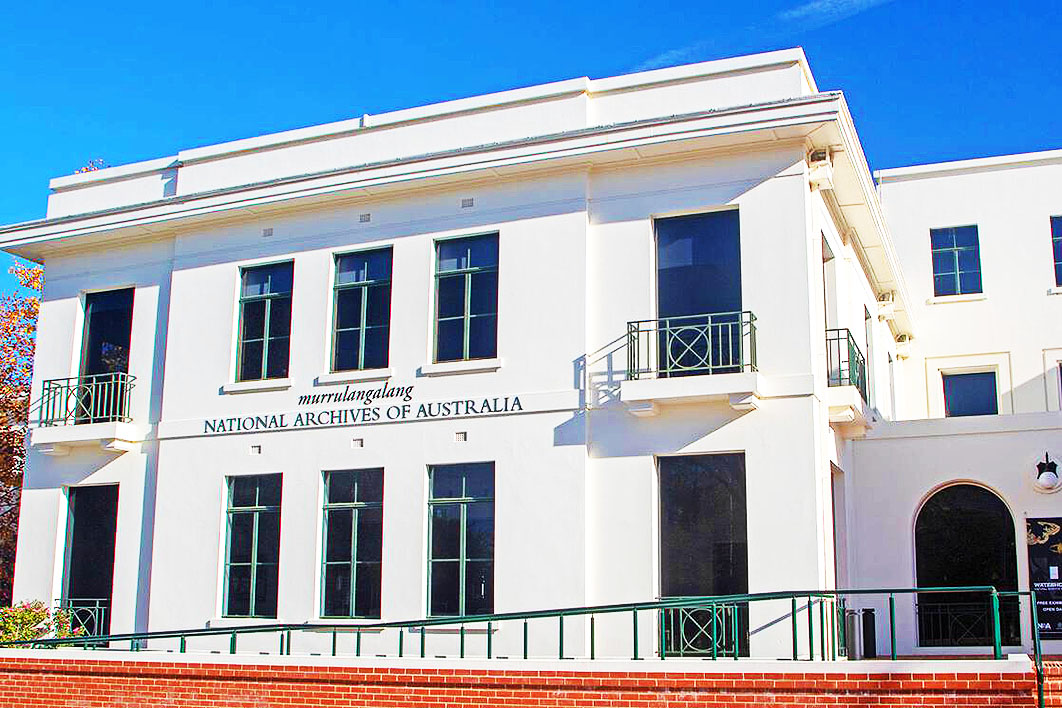When Paul Hasluck arrived in the Department of External Affairs in 1941 he found a department in chaos. The information systems necessary to sustain decision-making were floundering. The filing system was rudimentary. Much depended on personal memory of a couple of officers. “Papers were removed, transferred or discarded to suit some temporary convenience,” he wrote years later.
When he asked for highly classified cables on Syria in order to prepare a brief on a prospective Allied intervention, he was brought a file on Tasmania. As he recounted, the clerk “could not find Syria in the index of files but one of the boys told her later it was a town in Tasmania so that is where she put it.” These experiences made Hasluck an expert witness to the fragility of the archival record when he came to write an official history of Australia at war.
I was reminded of this account when Senator Amanda Stoker recently dismissed concerns about the state of the National Archives of Australia. “Time marches on and all sources degrade over time,” she remarked breezily. That response to a question in a Senate committee hearing has provoked much discussion about the value of the archives to the “nation’s memory.”
“Help save the nation’s memory before it’s too late” has been the plaintive cry of the National Archives itself in its appeal for public donations. A vigorous campaign by Gideon Haigh and Graeme Davison gathered 150 signatories to a public letter to the prime minister that led to a belated emergency grant of $67 million to preserve and digitise records at risk. Whether that will be enough to extend the life of the rest of the repository is a question hanging over this major national institution.
Most of the public campaign advocating preservation highlighted the place of the National Archives in a nation’s memory, a place that may be mined for personal stories as well as stories crafted into national narratives. But the National Archives matters at another level — and that is for government itself, for its quality, its accountability, and its capacity to respond to questions about past actions that may have present consequences and incur future liabilities. The keeping of records and access to them, as Haigh has put it, “is fundamental to the protection of citizens and the prevention of harm.”
Paul Hasluck came into public service — becoming official historian, senior minister in the Menzies government and eventually governor-general — from a background in journalism. He knew how to write a good story, and he knew the importance of good sources.
In 1942 he published Black Australians, the first serious history of Aboriginal policy in Australia, in which he recovered from the fledgling archives the inside story of how early colonial governors decided the fate of Aborigines in his home state of Western Australia. His experience in wartime government administration, and his skills in researching those ill-kept files made him a gifted practitioner of public history in his two volumes of the Australian official war history, The Government and the People. Hasluck knew about archives and their preservation mattered deeply to him.
How does a government know its people? And how does a people know its government? How does a government account for actions that in later times may be questioned, even to the point of imposing new obligations? Over recent decades numerous inquiries into matters that have become socially and politically contentious have shown us why these questions matter. They have shown us why archives matter, not just to a nation’s memory but to a nation’s governance.
Take the Royal Commission into Aboriginal Deaths in Custody (1987–91), for example, where identifying the “underlying conditions” that resulted in disproportionate incarceration of Indigenous peoples demanded extensive probing, frequently hampered by poor record-keeping and lost records.
Or the Royal Commission into Institutional Responses to Child Abuse (2013–17), where the condition and accessibility of public and private records became central to calculating harms done and responsibilities incurred.
Or the Royal Commission into British Nuclear Tests in Australia (1985), which investigated the conditions under which nuclear tests were conducted in the 1950s in order to establish a basis for seeking British compensation for damage little understood at the time of the tests.
Or the Menzies review of suspected war criminals’ entry to Australia (1986) — and later Commonwealth agency inquiries on this subject — which required painstaking scrutiny of security and immigration records to determine whether the federal government had acted in line with its international and domestic legal obligations.
Or the Bringing Them Home report of the Australian Human Rights Commission (1997), which drew on personal testimony and public records to reveal the sorry story of removals of Indigenous children and their intergenerational consequences.
Or the Senate inquiry into the “forgotten Australians” (2003–04), which investigated the history and consequences of institutional care and child migration to Australia in the postwar years.
This is but a small sample of how government actions in one era became cause for government inquiry in another. In each case, researchers drew on surviving records in many media, and on personal testimony where it was still available, to establish historical liability retrospectively.
This purpose — a government that is accountable and responsible — is one reason why we need excellent archives, and the best conditions for keeping them expertly curated and accessible. The National Archives of Australia is not an optional extra; it is a necessary pillar not only of a healthy culture but also of good government. •




